1 January 1778 Thursday
The views of Paestum and the plan of Hadrian's villa are becoming more and more Francesco's projects, while Piranesi devotes most of his work time to the Circus of Caracalla--that's the mystery the father wants to solve, and, at the same time, he is very confident in the ability of his son.
1 January 1783
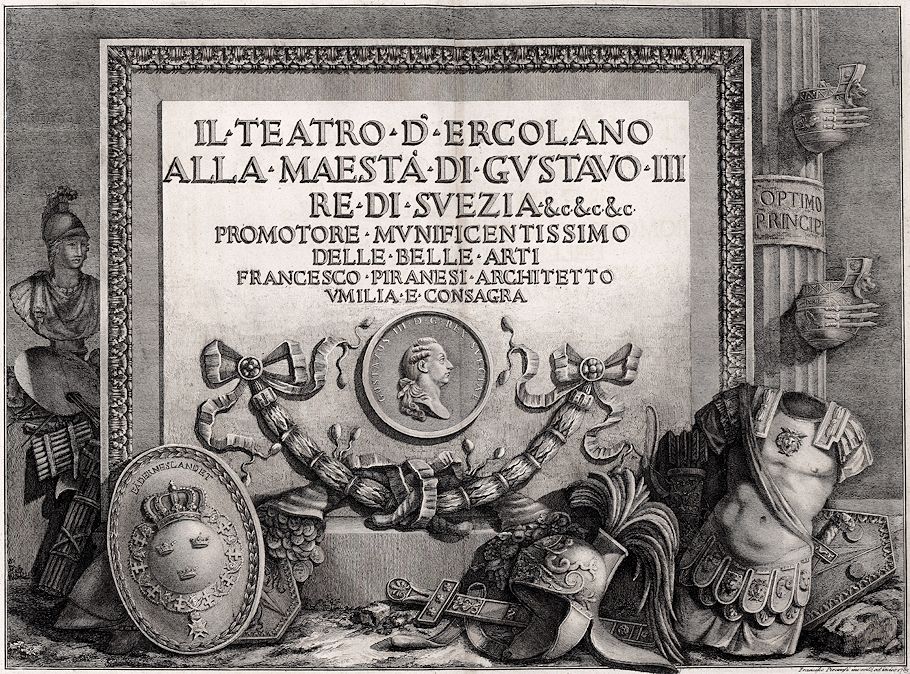
The Theater of Herculaneum to the Majesty of Gustav III King of Sweden Enormous Promoter of the Fine Arts Francesco Piranesi Architect Humble and Consagrate Francesco Piranesi invented and engraved 1783
1 January 1784
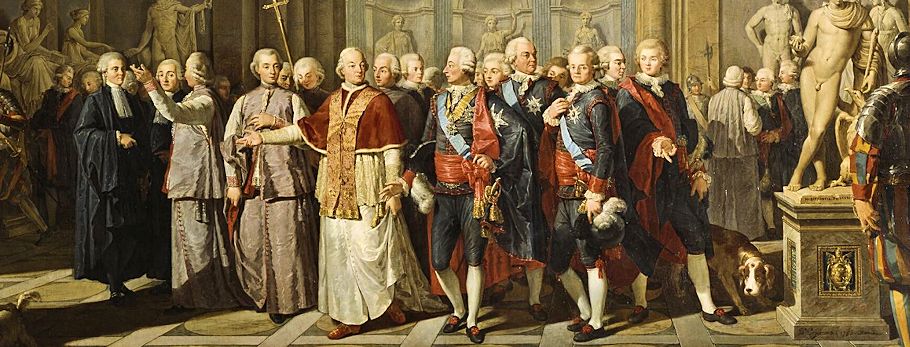
Bénigne Gagneraux, detail of The Meeting of the King Gustav III of Sweden and the Pope Pius VI at the Museo Pio-Clementino in Rome on 1 January 1784 (Stockholm: Nationalmuseum, 1785).
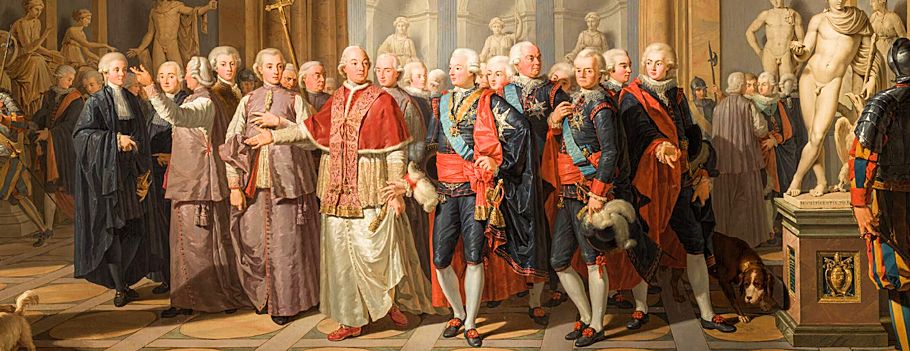
Bénigne Gagneraux, detail of The Meeting of the King Gustav III of Sweden and the Pope Pius VI at the Museo Pio-Clementino in Rome on 1 January 1784 (Prague: National Gallery, 1785).
1 January 1812 Wednesday
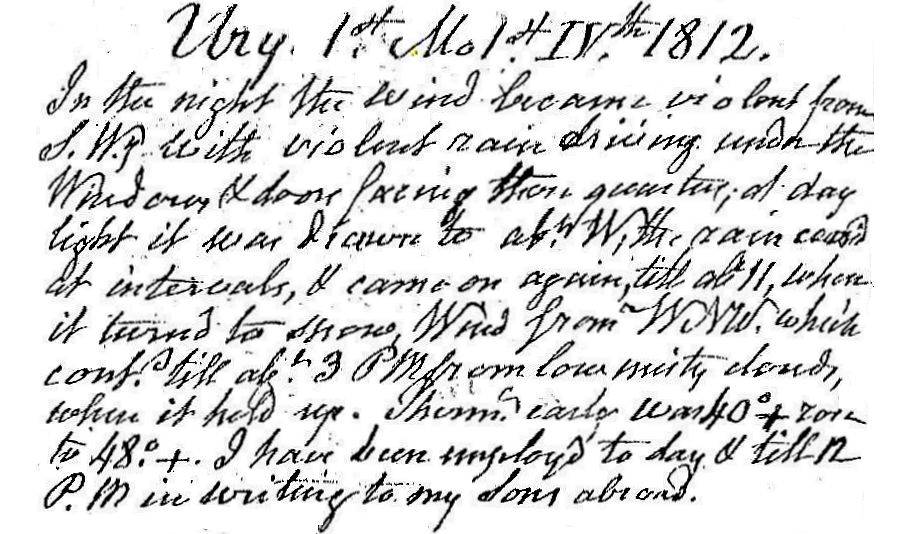
In the night the wind became violent from SWly with violent rain driving under the windows and doors facing those quarters; at day light it was driven[?] to about W. The rain ceased at intervals, and came on again till about 11, when it turned to snow. Winds from WNW, which continued till about 3pm from low misty clouds, when it held up. Therm. early was 40°+ rose to 48°+. I have been employed today and till 12pm in writing to my sons abroad.
1 January 2003
Trading Cities 3
The following is from Italo Calvino's Invisible Cities:
Trading Cities 3
When he enters the territory of which Eutropia is the capital, the traveler sees not one city but many, of equal size and not unlike one another, scattered over a vast, rolling plateau. Eutropia is not one, but all these cities together; only one is inhabited at a time, the others are empty; and this process is carried out in rotation. Now I shall tell you how. On the day when Eutropia's inhabitants feel the grip of weariness and no one can bear any longer his job, his relatives, his house and his life, debts, the people he must greet or who greet him, then the whole citizenry decides to move to the next city, which is there waiting for them, empty and good as new; there each will take up a new job, a different wife, will see another landscape on opening his window, and will spend his time with different pastimes, friends, gossip. So their life is renewed from move to move, among cities whose exposure or declivity or streams or winds make each site somehow different from the others. Since their society is ordered without great distinctions of wealth or authority, the passage from one function to another takes place almost without jolts; variety is guaranteed by the multiple assignments, so that in the span of a lifetime a man rarely returns to a job that has already been his.
Thus the city repeats its life, identical, shifting up and down on its empty chessboard. The inhabitants repeat the same scenes, with the actors changed; they repeat the same speeches with variously combined accents; they open alternative mouths in identical yawns. Alone, among all the cities of the empire, Eutropia remains always the same. Mercury, god of the fickle, to whom the city is sacred, worked this ambiguous miracle.
site of first circumcisions
It seems that Mamre, the place of settlement and burial of Abraham, within today's Hebron, is also the site of the Abraham's and Ishmael's circumcision.
[1 January is the Christian feast of Christ's circumcision.]
At the east side of the Herodian enclosure are the foundations of the Basilica of the Terebinth of Mamre from the time of Constantine (4th-century AD), attributed to Constantine's mother-in-law, Eutropia. According to one source, when Eutropia visited the site, she found it defiled by idols and heathen sacrifices. When she informed Constantine of the situation the emperor wrote a letter (preserved in Eusebius' "Life of Constantine") to Macarius, the bishop of Jerusalem, and other bishops in Palestine, expressing his desire that the pagan altar be demolished and replaced by a church. This church was so important that it was depicted on the famous 6th century AD Madaba map. It was probably destroyed during the Persian invasion in 614 A.D.
--some results of a web search of eutropia hebron
1 January 2004
Re: earthquake in Italy
Yesterday, I began reading 1421: The Year China Discovered America by Gavin Menzies: "In the mid-fifteenth century almost every Chinese map and document of the period was deliberately destroyed by officials of the Chinese court, following an abrupt reversal of its foreign policy. Far from embracing the outside world, after these momentous discoveries China turned in on itself. Anything commemorating its expansionist past was expunged from the record."
How's this for an oxymoron?: "Damnatio memoriae lives on."
1 January 2014
Constructing Modernity (KSA Japan Wrap-Up)
Last week I read the following passage:
"When they came to build the west front of St.-Pierre at Corbie, in the first decade of the eighteenth century [begun c. 1706], they submitted a design in the Gothic mode for the proposed classical facade that was submitted earlier, a decision parallel to that made at the same time for the west front Orleans cathedral, where the king, possibly under the influence of the Maurist scholar Bernard de Montfaucon, demanded that "l'ordre gothique" be adhered to. These, though, may all be interpreted as examples of Gothic survival."
Of course, I have long known the term 'Gothic revival,' but this was my first introduction to the term 'Gothic survival.'
...you write, "Kuma continues to work in a subtle postmodern mode – an indication to me that a PoMo revival is in the works." Perhaps Kuma's continued work falls within the category of PoMo survival. Just a thought.
When you wrote, "Though there is a slight break in my understanding of the history of Japanese architecture between the 70s and 80s," I right away thought of Arata Isozaki's work. Thinking now about Isozaki's continuum of work, there is a certain (very high quality but nonetheless) chameleon aspect to it all, not too dissimilar than the practice of Philip Johnson.
1 January 2018
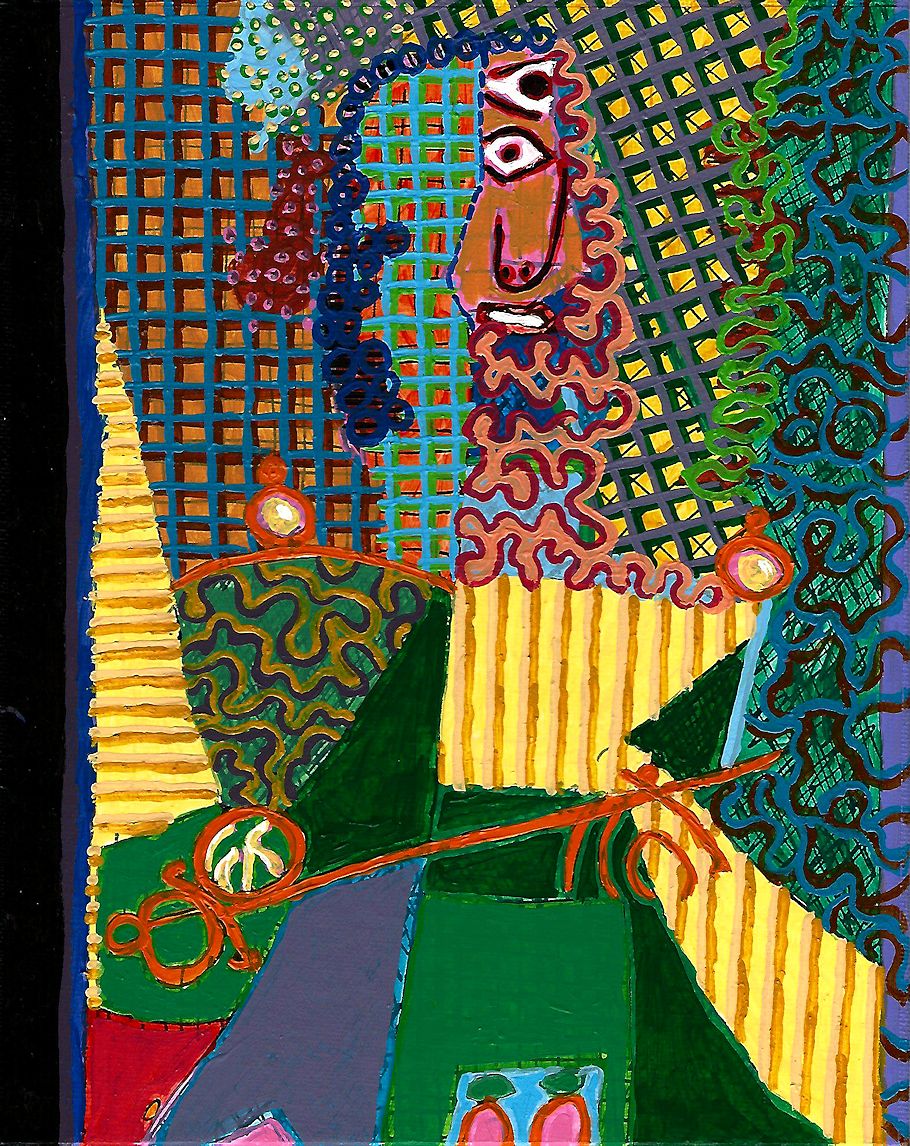
POPICA 012
1 January 2023 Sunday
Read some of Giuseppina Enrica Cinque's "The plan of the Certosa and the map of Francesco Piranesi" where the notion of Francesco taking revenge on his father:
"I note that it is Francesco himself who declares that he took care of the design and printing of the plan of Villa Adriana116 and given that, as repeatedly observed, this plan is mainly derived from that of 1751, with some, minimal, additions found from the plan of the Certosa and others extraneous to all the previous elaborations, it arises spontaneously to wonder about the reasons that push him to draw and engrave a plant different from the partially one elaborated by his father very little before, and then analyze the interest that motivates him in the drafting of the other, numerous, drawings of the Villa. With reference to the plan, it must be considered that Francesco is certain in attributing the 1751 work to his father and that, instead, he doubts so much the quality of the survey conducted by Gondoin that he decides not to adopt the plan of the Certosa; from which the contribution of John the Baptist in the drafting of the same paper should be considered minimal, if not null.
Of a completely opposite kind, could be the reason deriving from family disagreements and, in particular, from the difficult relations between John the Baptist and Francis, the subject of several comments in the literature written in times close to the unfolding of the facts, "But he will always have regret that he was still a cause for concern to the said his Parent because one day he went so far as to turn against him with a knife in his hand. It is very true that the Father tyrannized him too much and it was a cause that, not being able to have some paulo asking him, he began to steal it from him". Starting from these indications it could be considered that Francis, at the death of his tyrannical father, assumed that typical attitude of revenge which, at least initially, leads to refuse any support coming from previous experiences."
books.openedition.org/efr/33175: auto-translated from the Italian.

22:24 Mars, the moon, and a jet tail.
|